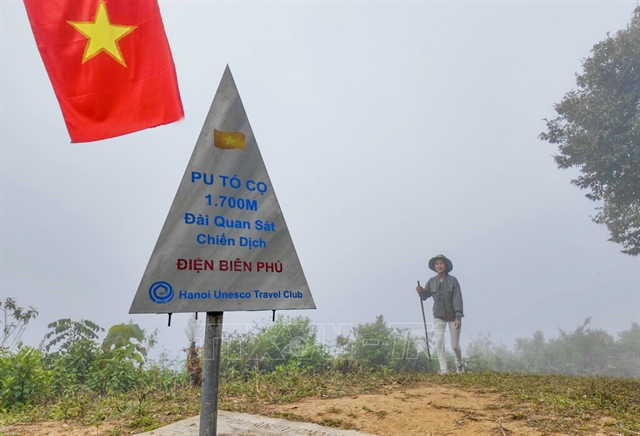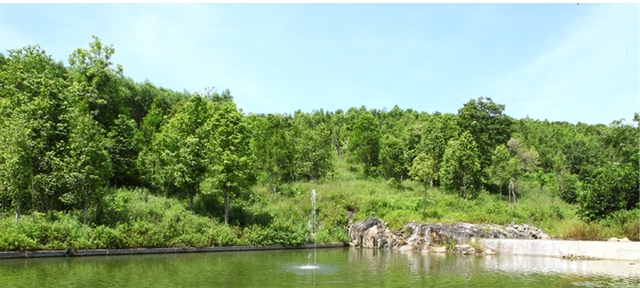 Sunday/Weekend
Sunday/Weekend
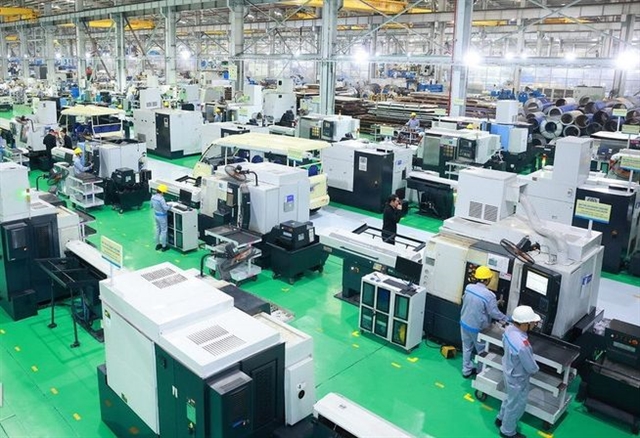
Lương Thu Hương
This year marks a significant milestone in the history of Việt Nam’s cultural landscape – the 100th anniversary of the Việt Nam University of Fine Arts (VNUFA), the cradle of the nation's modern art.
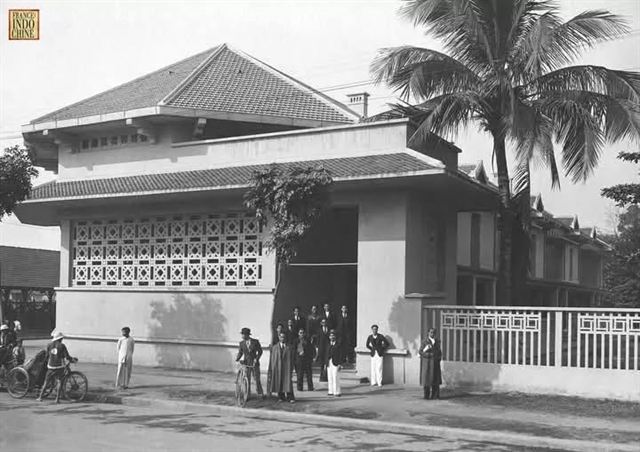 |
| The facade of the Indochina School of Fine Arts on Yết Kiêu Street, pictured in the early-mid 1930s. File photo |
From there, generations of celebrated painters, sculptors and designers have emerged, leaving a distinct Vietnamese mark on the global art map. The university has not only served as an incubator for talent but also as a vibrant hub for artistic experimentation and collaboration.
According to Đoàn Thị Mỹ Hương of the Việt Nam National Institute of Culture and Arts, the establishment of VNUFA, formerly known as L'Ecole des Beaux-Arts de l'Indochine (the Indochina School of Fine Arts -- ISFA), stemmed from the French colonial government's artistic renewal ideas to "Westernise" Vietnamese art in the early 20th century.
It was initiated by French painter Victor Tardieu (1870-1937) who sent a report to the Governor-General of Indochina in 2021, asserting the necessity of establishing a fine arts school in Hà Nội. It was expected to educate and nurture the tastes of the people in Indochina, helping them understand the value of traditional art, while also introducing new knowledge in visual arts and enhancing the strengths and characteristics of Eastern art.
Through their efforts, Tardieu and his associate, Vietnamese painter Nguyễn Nam Sơn (1890-1973), ultimately achieved their aspiration. On October 27, 1924, the Governor-General issued a decision to establish ISFA and appoint Tardieu as the director.
The first director implemented a more progressive policy than others in the then colonial society. He tried to protect the school's operation in training pure artists. Meanwhile, Sơn took the lead in many phases of the school construction and was also a lecturer directly involved in teaching.
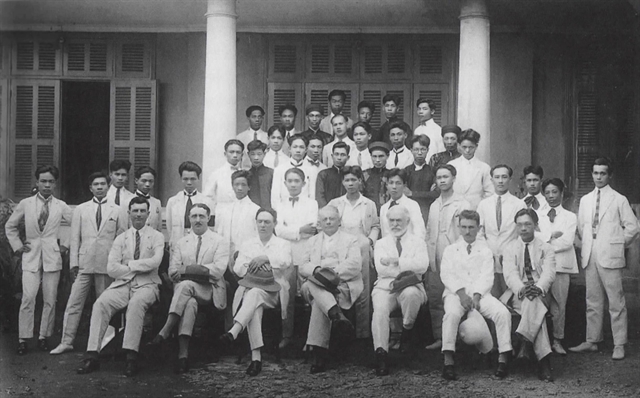 |
| The first director of the Indochina School of Fine Arts, Victor Tardieu (front row, seated, centre), with teachers and students in 1926. File Photo |
From 1925 to 1945, the school offered training in various art fields, including painting, sculpture, architecture, fine arts and ceramics to meet the needs of contemporary society.
“ISFA was the birthplace of modern Vietnamese art. The school initiated an artistic revolution, blending Western techniques such as oil painting and sketching with traditional materials like silk, lacquer and folk themes,” art researcher Ngô Kim Khôi told Việt Nam News.
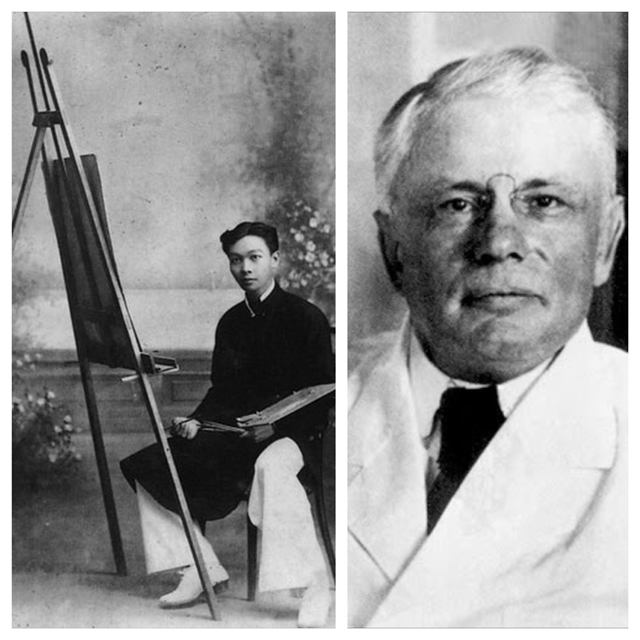 |
| Vietnamese painter Nguyễn Nam Sơn (left) and French painter Victor Tardieu. File photos |
According to Khôi, the first graduates of ISFA became outstanding artists who shaped Vietnamese modern art and made a mark internationally. Notable figures include Mai Trung Thứ, known for his exquisite silk paintings; Lê Phổ, who brought Vietnamese art to the galleries of Paris; Nguyễn Gia Trí, a master of lacquer with a modernised traditional style; Tô Ngọc Vân, who blended realism with lyrical elements; and Vũ Cao Đàm, recognised for his sculptures and paintings that embody the Vietnamese spirit.
“These artists created a rich artistic legacy that is both deeply national and internationally integrated, laying a solid foundation for modern Vietnamese art,” Khôi said.
After 1945, amidst the backdrop of war, the school contributed to training generations of painters and sculptors who made significant contributions to the national independence and unification efforts.
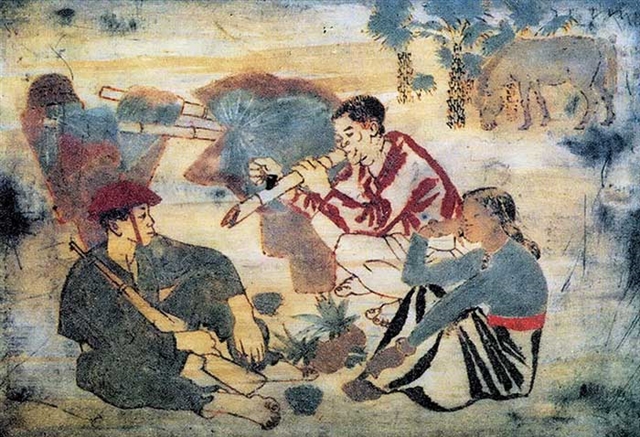 |
| Lacquer painting Nghỉ Chân Bên Đồi (Resting by the Hill) by painter Tô Ngọc Vân (1906-1954), one of the pioneering “Four Masters” of Vietnamese modern art. It was painted in 1948 when he joined the anti-French resistance war. |
During the era of restoration of peace and national building, the school continues to be a place for nurturing artists who embody creativity and keep pace with contemporary developments.
International recognitions
VNUFA has made significant contributions to the development of modern Vietnamese fine arts across various dimensions. One of its major contributions is the emergence of the Indochinese artistic style, which was prominent during the 1925-1945 period and continues to influence art today.
The pioneering painters, first graduates of the school, creatively blended traditional materials with the meticulous and refined technique of oil painting. They not only preserved the national spirit through familiar themes but also infused their works with the fresh light of Western aesthetics.
As a result, each Indochinese painting is rich in national identity while possessing a unique appeal to a global audience.
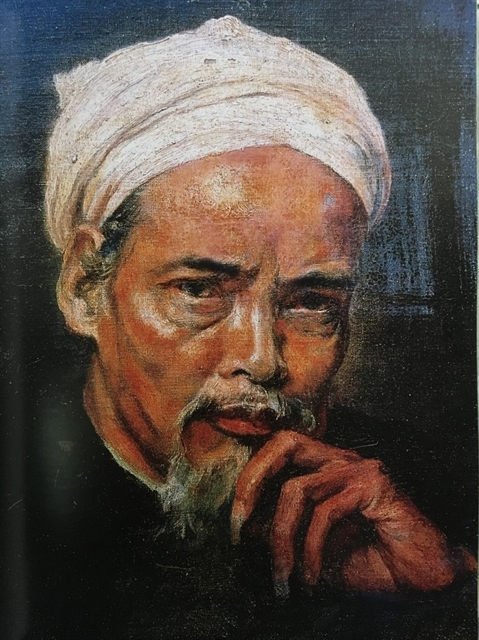 |
| Oil painting Nhà Nho Xứ Bắc (Confucian Scholar from the North) by Vietnamese painter Nam Sơn. |
To this day, the imprint of Indochinese art can be found throughout creative life. From painting and sculpture to interior design and fashion, each field draws on the distinctive materials and compositions characteristic of this period.
Many representative works of the Indochinese generation of artists are still being preserved and displayed in renowned museums at home and abroad.
At least 20 Indochinese artworks have been traded for over US$1 million, with Sotheby’s leading the way with nine works.
Some notable paintings are Portrait de Mademoiselle Phuong by Mai Trung Thứ sold at Sotheby’s Hong Kong for $3.1 million, the highest publicly recorded price for a Vietnamese artwork to date, or Lê Phổ's works Figures in a Garden and Young Lady Tying Her Scarf sold at $2.3 million and $1.1 million, respectively.
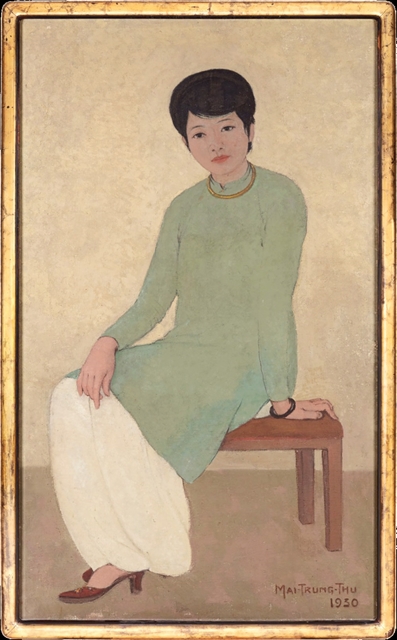 |
| 'Portrait de Mademoiselle Phương' by Mai Trung Thứ was sold for US$3.1 million, the highest price paid for Vietnamese art. |
The market is gradually noting the steady emergence of successive generations of artists, such as Trần Lưu Hậu, Lưu Công Nhân (from the war of resistance period), Nguyễn Trung, Đặng Xuân Hòa and Trương Tân (contemporary), opening up prospects for multi-segment development in contemporary Vietnamese art.
VNUFA lecturers and students have reached a high professional level, affirming their artistic prestige and being respected by the public and among the art community. They have had works exhibited abroad and won many domestic and international art awards.
Besides producing generations of talented artists, VNUFA has achieved numerous milestones in Vietnamese art and education in the past 100 years.
For example, six out of nine national treasures preserved at the Vietnam National Museum of Fine Arts are modern artworks by artists graduating from the university.
Among the recipients of the Hồ Chí Minh Prize for Literature and Arts, 21 out of 23 were students or faculty members of the university at various periods. In the field of fine arts and architecture, 67 out of 79 recipients of the State Prize for Literature and Arts nationwide are also linked to the university.
“In the first 25 years of the 21st century, VNUFA has continued its proud historical tradition, making breakthroughs towards international integration, promoting Vietnamese art globally, and introducing new forms of art from around the world into Việt Nam,” said Nguyễn Nghĩa Phương, vice rector of VNUFA.
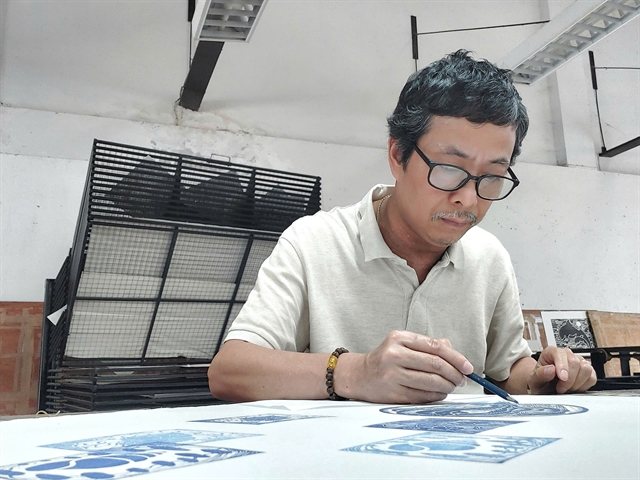 |
| Nguyễn Nghĩa Phương, vice rector of VNUFA. Photo courtesy of VNUFA |
“Projects with foreign organisations and art schools undertaken by the university have opened up new contemporary paths, inspiring artistic practices that align with global contemporary art.
“Through these projects, we distil the most suitable elements to incorporate into the university's training programmes, thereby spreading them in artistic creation and laying the groundwork for significant changes toward internationalisation while enhancing traditional artistic and cultural values,” he said.
100-year celebration
This year is a grand celebration for art enthusiasts across the country, with a variety of activities hosted by VNUFA to commemorate the 100th anniversary of the cradle of Vietnamese modern art.
Students and lecturers of VNUFA said they were filled with great pride and excitement to prepare for a range of celebratory activities throughout 2024 and 2025.
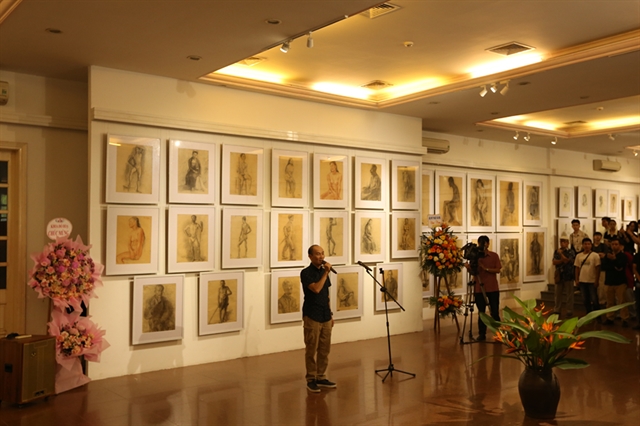 |
| An exhibition to celebrate the 100th anniversary of the university’s founding. Photo courtesy of VNUFA |
These will include thematic exhibitions, contests, and thematic talks about the school's history from 1925 to the present.
VNUFA has organised two scientific conferences: Towards the 100th Anniversary of the Vietnam University of Fine Arts and the international conference The Vietnam University of Fine Arts: 100 Years of Modern Art Creation and Serving the Nation.
“The scientific papers presented by both domestic and international speakers provided a comprehensive and detailed overview of the development process, the role, and the contributions of VNUFA to the art scene and society," Vice Rector Phương said.
"The unfolding of these events has gradually heightened the emotions and pride of generations of faculty, staff, students, and trainees at the university."
According to painter Trần Trung Thành, a graduate of VNUFA in 2003, the celebration is a tribute to its first director, French painter Victor Tardieu.
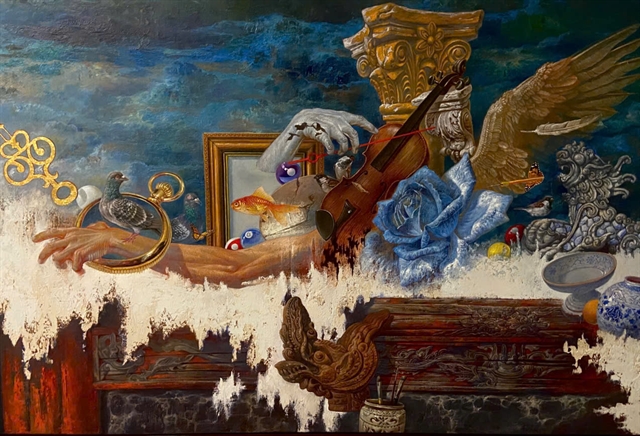 |
| Oil painting Dấu Vết Thời Gian (Traces of Time) by Trần Trung Thành, a graduate of VNUFA in 2003 |
"The 100-year journey of the university marks a new beginning for Vietnamese art. This foundation owes a deep debt of gratitude to Victor Tardieu, the school's first director, who opened new pathways for Vietnamese artists," Thành said.
While Việt Nam has a rich artistic heritage, it wasn't until the 20th century that Vietnamese artists began to engage with Western painting styles and new materials, Thành said.
"This engagement signalled a fresh start for modern Vietnamese art, allowing individual artists the freedom to explore and assert their unique values. We, as artists, are immensely grateful and proud to have been educated and trained in this artistic environment," he added.
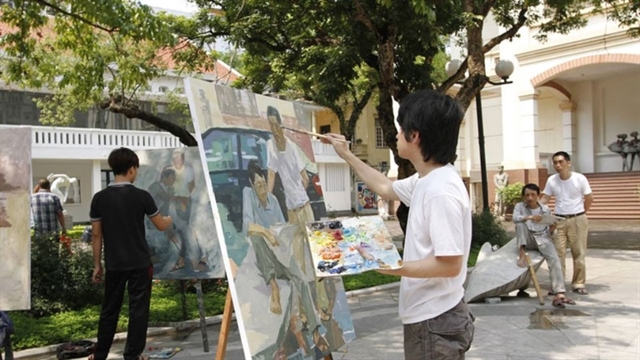 |
| An outdoor workshop for students at VNUFA. Photo courtesy of VNUFA |
According to Phương, VNUFA has consistently pursued a liberal education philosophy that maximises the potential of learners while maintaining a rigorous and scientific approach to foundational training.
The key aspect here is the close emotional bond and shared understanding between teachers and students regarding their profession, which has shaped its distinctive style.
"It is only when teachers and students are connected by their hearts that the creative potential of students can truly be fostered," he noted.
“The core values of identity, creativity and humanity that the university has built and pursued for a century are the unique characteristics that define its brand. Although the forms and expressions may change over time, these values remain constant.”
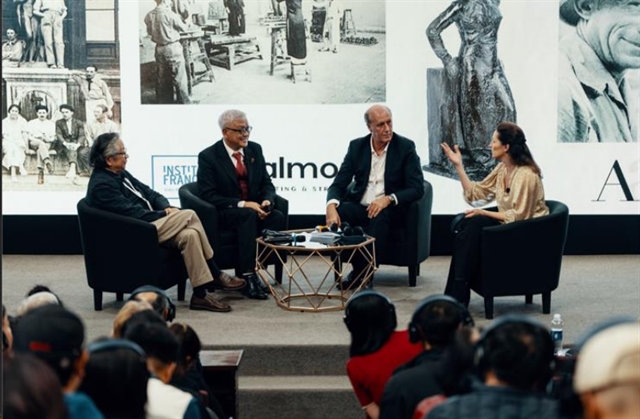 |
| Art researcher Ngô Kim Khôi (second left) in a discussion led by president of the Association des Artistes d'Asie à Paris, Charlotte Aguttes-Reynier. Photo vietnamplus.vn |
He reaffirmed that innovation and creativity in curriculum, methods, and expanded training remained a priority and primary mission of the university. This commitment is essential to uphold the esteemed position and brand of the leading fine arts institution in the country and the region.
Art researcher Khôi believes the 100-year art university will continue to be a nurturing cradle for Vietnamese art talent, pioneering in the application of technology, encouraging interdisciplinary experimentation, and serving as a bridge to showcase Vietnamese art to the world.
“With a solid historical foundation from the Indochinese era, the university will shape a modern Vietnamese art scene that is confident and rich in identity,” Khôi said. VNS

